Enjoying the content on 3QD? Help keep us going by donating now.
Category: Recommended Reading
Vinod Khosla | Predicting the Future
Enjoying the content on 3QD? Help keep us going by donating now.
A Cancer Patient Chose Assisted Death. That Wasn’t the Last Hard Choice
Stephanie Nolen in The New York Times:
 The crowd was expectant when Tatiana Andia took the microphone: She was a hero to many in the room, the woman who negotiated cheaper drug prices for Colombia. But that day, at a conference for policymakers and academics on the right to health in Latin America, there was a more intimate topic she wanted to discuss.
The crowd was expectant when Tatiana Andia took the microphone: She was a hero to many in the room, the woman who negotiated cheaper drug prices for Colombia. But that day, at a conference for policymakers and academics on the right to health in Latin America, there was a more intimate topic she wanted to discuss.
“A year ago I was diagnosed with a terminal lung cancer,” she began, “one that’s incurable, catastrophic, all the terrible adjectives.” She gave a small laugh, acknowledging the whole thing sounded preposterous.
The air in the packed conference room went still.
Ms. Andia, 44, a professor and a former official in Colombia’s health ministry, said she was going to speak not as an expert, but from a different perspective, one newly acquired — that of a patient. A particular health rights issue preoccupied her these days, she said: the right to death.
No one, she went on, wants to talk to me about dying.
More here.
Enjoying the content on 3QD? Help keep us going by donating now.
Flaco Jiménez (1939 – 2025) Accordionist And Singer/Songwriter
Enjoying the content on 3QD? Help keep us going by donating now.
Sunday Poem
Kashmir Bleeds
They wait for the tourists,
What would the soldiers do with her or with her hungry children?
To liberate the land, and celebrate the victory.
Gary Karr (1941 – 2025) Double Bass Virtuoso
Enjoying the content on 3QD? Help keep us going by donating now.
Friday, August 1, 2025
If Charlie Brown Were a Socialist: On Beloved Argentine Comic Strip Mafalda
Alex Dueben at Literary Hub:
 Mafalda is a young girl who hates soup and hypocrisy and loves democracy and the Beatles. She’s a precocious six year innocently questioning how the world works—often to the exasperation of her parents. She and her friends struggle to learn chess, try to become telepathic, and worry about war and overpopulation. After making a passionate plea for world she realizes that “the U.N., the Vatican and my little stool have the same power to sway opinion.” And she has the same hairstylist as Ernie Bushmiller’s Nancy
Mafalda is a young girl who hates soup and hypocrisy and loves democracy and the Beatles. She’s a precocious six year innocently questioning how the world works—often to the exasperation of her parents. She and her friends struggle to learn chess, try to become telepathic, and worry about war and overpopulation. After making a passionate plea for world she realizes that “the U.N., the Vatican and my little stool have the same power to sway opinion.” And she has the same hairstylist as Ernie Bushmiller’s Nancy
Mafalda is the star of the titular comic strip, originally published in Argentina from 1964-73, newly translated into English from Elsewhere Editions, the children’s imprint at Archipelago Books, in its first foray into comics.
Mafalda has long been compared to Charles Schultz’s Peanuts. Both are aimed at children, but are complex enough to be appreciated by adults. Both are simply drawn, but never simplistic. The interactions of the child protagonists have metaphoric and politic overtones. The humor in Mafalda toggles from complex wordplay to visual humor to political allegory.
More here.
Enjoying the content on 3QD? Help keep us going by donating now.
Genghis Khan And The Mongol Empire
Enjoying the content on 3QD? Help keep us going by donating now.
What neuroscience says about reading versus listening
Stephanie N. Del Tufo in The Conversation:
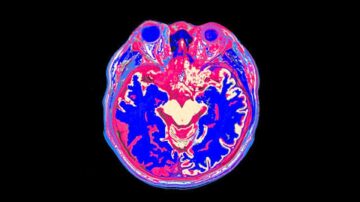 As a language scientist, I study how biological factors and social experiences shape language. My work explores how the brain processes spoken and written language, using tools like MRI and EEG.
As a language scientist, I study how biological factors and social experiences shape language. My work explores how the brain processes spoken and written language, using tools like MRI and EEG.
Whether reading a book or listening to a recording, the goal is the same: understanding. But these activities aren’t exactly alike. Each supports comprehension in different ways. Listening doesn’t provide all the benefits of reading, and reading doesn’t offer everything listening does. Both are important, but they are not interchangeable.
More here.
Enjoying the content on 3QD? Help keep us going by donating now.
The Trials of Subu Vedam
Gopal Balachandran at the New England Review:
I recall, during the eighties, family members of mine whispering about the Indian kid in Pennsylvania convicted of murder, the Indian community being small, and the Tamil Brahmin community, to which Subu and I both belong, even smaller. Subu was the kid who’d gone down the wrong path, mixing with the wrong crowd, making for the most powerful cautionary tale of them all. Subu’s father was an academic, a physics professor and materials scientist at Penn State, who would have blended seamlessly with my parents’ friends in North Carolina, who were all vegetarian and spoke Brahminical Tamil with its idiosyncratic conjugations and vocabulary. Mrs. Vedam, as she was known in the community, always wore a sari, a thick bindi, and a thali wrapped around her neck, just like my mother. Subu, just like me, was invested with the sacred thread. Their faded color photos from the seventies and eighties could have graced any number of our peeling albums. But it was also easy to set it aside—central Pennsylvania was a world away from North Carolina. And who wanted to believe that life in middle-class suburbs, as uneven as it sometimes was for educated immigrants, could be taken away so abruptly and so easily? We all knew it could. From the hard experience of life in India, my parents knew that pure chance often led to ruin. They passed that kernel, epigenetically, to me. No wonder my nightmares of being in jail, cause unknown, started in childhood.
more here.
Enjoying the content on 3QD? Help keep us going by donating now.
Anthropic CEO Dario Amodei: AI’s Potential, OpenAI Rivalry, GenAI Business, Doomerism
Enjoying the content on 3QD? Help keep us going by donating now.
The White Blouse of Sandra Mozarowsky
Clara Usón at the Paris Review:
 Sandra Mozarowsky was never a queen. She was never a king’s girlfriend. She was the king’s lover, though, if you believe the rumors.
Sandra Mozarowsky was never a queen. She was never a king’s girlfriend. She was the king’s lover, though, if you believe the rumors.
As the Franco regime approached its end, its subjects started demanding freedom of expression. Not the whole country, but enough of us to be heard. Our demands for liberty got louder and more insistent, and the regime took them to mean that we wanted to see breasts. We wanted naked women, or half-naked, and so we spent the mid-seventies gaping in awe as our country attained the dubious freedom of a national cinema starring girls who, without fail, opened or removed their tops within seconds of appearing onscreen.
Yes, in Spain, freedom was for breasts. You could spy some liberated bush in a semilegal softcore magazine, too, though never ever a penis. Visible male genitalia would be libertinism, which was anathema. According to the many government ministers and functionaries assigned to disseminate this message, liberty was one thing, libertinism another, and as a nation, it was important for us not to get them confused.
more here.
Enjoying the content on 3QD? Help keep us going by donating now.
The Trumping of Europe
Zaki Laïdi at Project Syndicate:
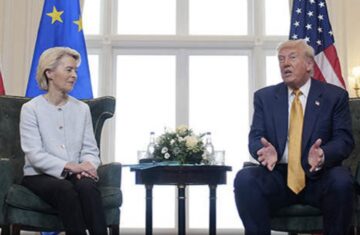 One can reproach Viktor Orbán, a friend of US President Donald Trump and Russian President Vladimir Putin, for many things. But the Hungarian prime minister is not wrong to point out that we have just witnessed Trump “eating [European Commission President] Ursula von der Leyen for breakfast.” After all, the draft trade agreement the European Union has now concluded with the United States sets a 15% tariff on most European exports to the US, against a 0% tariff on US exports to Europe. Clearly, the match goes to Trump, 15 to nil.
One can reproach Viktor Orbán, a friend of US President Donald Trump and Russian President Vladimir Putin, for many things. But the Hungarian prime minister is not wrong to point out that we have just witnessed Trump “eating [European Commission President] Ursula von der Leyen for breakfast.” After all, the draft trade agreement the European Union has now concluded with the United States sets a 15% tariff on most European exports to the US, against a 0% tariff on US exports to Europe. Clearly, the match goes to Trump, 15 to nil.
This glaring asymmetry is a far cry from what Europe was demanding – namely, near-zero tariffs on both sides. And making matters worse, the framework also envisions $750 billion in forced purchases of US energy, $600 billion of European investment in the US, and additional orders of US-made military hardware.
More here.
Enjoying the content on 3QD? Help keep us going by donating now.
Worm-inspired treatments inch toward the clinic
Amber Dance in Knowable Magazine:
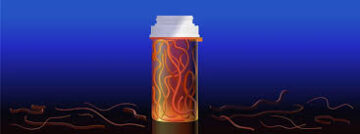 The experiment was a striking attempt to investigate weight control. For six weeks, a group of mice gorged on lard-enriched mouse chow, then scientists infected the mice with worms. The worms wriggled beneath the animals’ skin, migrated to blood vessels that surround the intestines, and started laying eggs.
The experiment was a striking attempt to investigate weight control. For six weeks, a group of mice gorged on lard-enriched mouse chow, then scientists infected the mice with worms. The worms wriggled beneath the animals’ skin, migrated to blood vessels that surround the intestines, and started laying eggs.
Bruno Guigas, a molecular biologist at the Leiden University Center for Infectious Diseases in the Netherlands, led this study some years back and the results, he says, were “quite spectacular.” The mice lost fat and gained less weight overall than mice not exposed to worms. Within a month or so, he recalls, the scientists barely needed their scale to see that the worm-infested mice were leaner than their worm-free counterparts. Infection with worms, it seems, reversed obesity, the researchers reported in 2015.
More here.
Enjoying the content on 3QD? Help keep us going by donating now.
The Tragedy Unfolding in Gaza
Karl Vick in Time Magazine:
 If any place had experience seeing civilians through war, it was the Gaza Strip. It’s much of why the place exists. That stretch of Mediterranean coast was only even named while being demarcated as a refuge for Palestinians driven off their land by Jewish forces in the 1948 war that created Israel. Gaza’s permanent status, like the fate of the Palestinians, was never decided, however. And as the decades churned on, so did the conflict.
If any place had experience seeing civilians through war, it was the Gaza Strip. It’s much of why the place exists. That stretch of Mediterranean coast was only even named while being demarcated as a refuge for Palestinians driven off their land by Jewish forces in the 1948 war that created Israel. Gaza’s permanent status, like the fate of the Palestinians, was never decided, however. And as the decades churned on, so did the conflict.
There was a devastating rhythm to it. Palestinian militants launched missiles into Israel from Gaza. Israel’s military replied with airstrikes, at times with sustained campaigns dubbed wars. The longest lasted 50 days. In each round of fighting, civilians knew where to find safety: in the schools, clinics, and hospitals run by the U.N., which also fed them.
More here.
Enjoying the content on 3QD? Help keep us going by donating now.
Friday Poem
Elegy for Jane
—My Student, Thrown by a Horse
I remember the neckcurls, limp and damp as tendrils;
And her quick look, a sidelong pickerel smile;
And how, once startled into talk, the light syllables leaped for her,
And she balanced in the delight of her thought,
A wren, happy, tail into the wind,
Her song trembling the twigs and small branches.
The shade sang with her;
The leaves, their whispers turned to kissing,
And the mold sang in the bleached valleys under the rose.
Oh, when she was sad, she cast herself down into such a pure depth,
Even a father could not find her:
Scraping her cheek against straw;
Stirring the clearest water.
My sparrow, you are not here,
Waiting like a fern, making a spiny shadow.
The sides of wet stones cannot console me,
Nor the moss, wound with the last light.
If only I could nudge you from this sleep,
My maimed darling, my skittery pigeon.
Over this damp grave I speak the words of my love:
I, with no rights in this matter,
Neither father nor lover.
Enjoying the content on 3QD? Help keep us going by donating now.
Thursday, July 31, 2025
More sex please, we’re bookish: the rise of the x-rated novel
Lara Feigel in The Guardian:
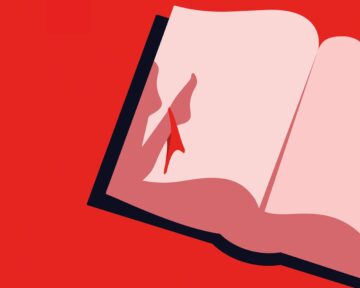 When the judges awarded Yael van der Wouden’s brilliant debut, The Safekeep, the Women’s prize for fiction last month, they weren’t just garlanding a book that happens to have a few sexy scenes in it. They were responding to a work that engages with the current levels of literary excitement around sex and marries this with sweeping historical vistas and a distinctive sensibility. It was joined on the shortlist by Miranda July’s exuberant odyssey of midlife desire, All Fours, and Fundamentally by Nussaibah Younis, a smart, quickfire account of a young academic’s work for a UN deradicalisation programme, which juxtaposes the world of Middle Eastern religious politics with a closeup relish for female sexuality.
When the judges awarded Yael van der Wouden’s brilliant debut, The Safekeep, the Women’s prize for fiction last month, they weren’t just garlanding a book that happens to have a few sexy scenes in it. They were responding to a work that engages with the current levels of literary excitement around sex and marries this with sweeping historical vistas and a distinctive sensibility. It was joined on the shortlist by Miranda July’s exuberant odyssey of midlife desire, All Fours, and Fundamentally by Nussaibah Younis, a smart, quickfire account of a young academic’s work for a UN deradicalisation programme, which juxtaposes the world of Middle Eastern religious politics with a closeup relish for female sexuality.
While younger generations, at least, have said in recent years that they want to see more platonic friendship and less sex on screen, reading appetites appear to be going in the other direction, with a huge boom in romance and “romantasy” – the romance-fantasy hybrid driven by TikTok and the success of authors such as Rebecca Yarros and Sarah J Maas.
More here.
Enjoying the content on 3QD? Help keep us going by donating now.
Alexander Clapp’s “Waste Wars”, a world-spanning inquiry into the politics of garbage, makes a case that everything that is wrong with capitalism is embodied in our trash
Carol Schaeffer in The Nation:
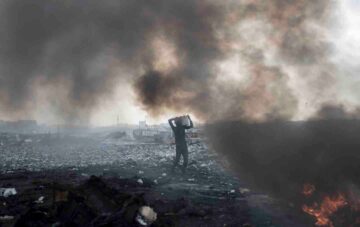 In 1960, the journalist and social critic Vance Packard identified a trend in American consumer culture: “planned obsolescence.” Either through superficial changes that made the older models appear outdated or through deliberately shortened product lifespans, consumers were encouraged to buy more, which also meant wasting more. It was a sales tactic, Packard found, originally popularized by a 1932 snake-oil salesman turned entrepreneur named Bernard London. London argued that manufacturers should deliberately shorten the lifespan of their products to drive continual consumer demand, boost sales, and keep the industry’s wheels turning. Just a few decades later, Packard argued that planned obsolescence was changing the very character of the American shopper: “We are being trained to live wastefully, with the idea that this is somehow patriotic,” he wrote in his book The Waste Makers.
In 1960, the journalist and social critic Vance Packard identified a trend in American consumer culture: “planned obsolescence.” Either through superficial changes that made the older models appear outdated or through deliberately shortened product lifespans, consumers were encouraged to buy more, which also meant wasting more. It was a sales tactic, Packard found, originally popularized by a 1932 snake-oil salesman turned entrepreneur named Bernard London. London argued that manufacturers should deliberately shorten the lifespan of their products to drive continual consumer demand, boost sales, and keep the industry’s wheels turning. Just a few decades later, Packard argued that planned obsolescence was changing the very character of the American shopper: “We are being trained to live wastefully, with the idea that this is somehow patriotic,” he wrote in his book The Waste Makers.
Packard was perhaps the 20th century’s most prolific Cassandra on the trajectory of American consumerism, a way of life that has touched every corner of the globe and reshaped the world economy. Americans are the world’s foremost buyers, and the rest of the world—until recently—has mostly happily served as willing merchants and manufacturers. This cycle of consumption has created so much trash on the planet that the quantities are almost impossible to comprehend.
More here.
Enjoying the content on 3QD? Help keep us going by donating now.
Yoshua Bengio: The Catastrophic Risks of AI — and a Safer Path
Enjoying the content on 3QD? Help keep us going by donating now.
When US President Donald Trump and European Commission President Ursula von der Leyen shook hands at Trump’s Scottish golf resort on Sunday, they weren’t just announcing a new trade deal – they were formalizing Europe’s economic and ideological surrender
Alberto Alemanno at Project Syndicate:
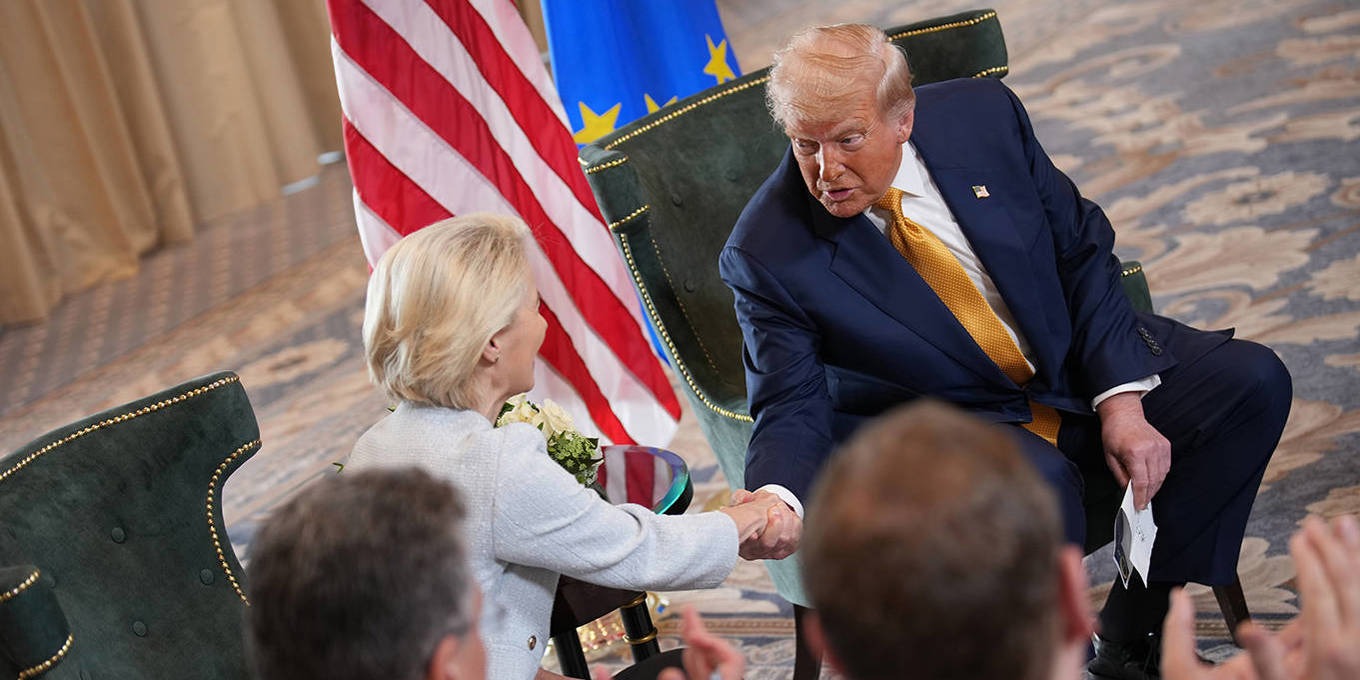 By agreeing to 15% tariffs on most exports to the United States, the European Union has capitulated to Trump’s zero-sum worldview. In doing so, it has abandoned the principles of multilateralism that have long guided global trade.
By agreeing to 15% tariffs on most exports to the United States, the European Union has capitulated to Trump’s zero-sum worldview. In doing so, it has abandoned the principles of multilateralism that have long guided global trade.
The economic consequences are immediate and severe. European exporters now face tariffs nearly ten times higher than the previous trade-weighted average of 1.6%. Volkswagen alone has reported a €1.3 billion ($1.5 billion) hit due to higher US tariffs.
But the tariff rate itself is just part of the problem. The real damage lies in what the EU agreed to pay for the “privilege” of maintaining access to the US market: a commitment to purchase $750 billion worth of American energy over three years and to invest another $600 billion in the US economy.
These staggering sums will inevitably divert resources from European development and innovation while legitimizing bilateral coercion over the multilateral, rules-based World Trade Organization system.
More here.
Enjoying the content on 3QD? Help keep us going by donating now.
